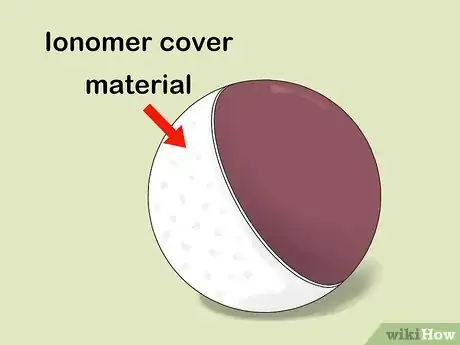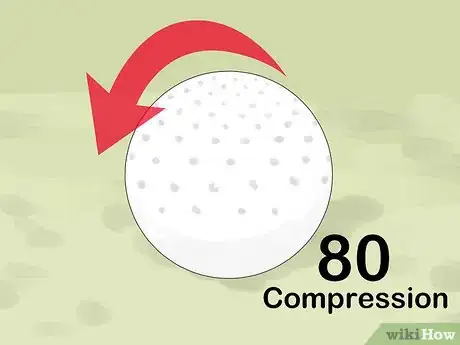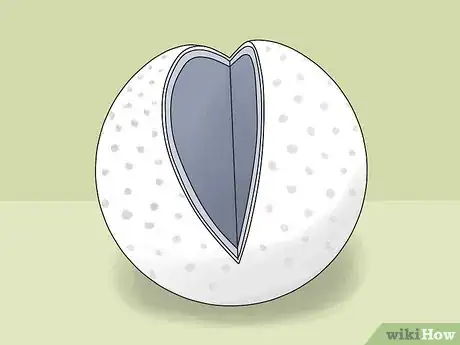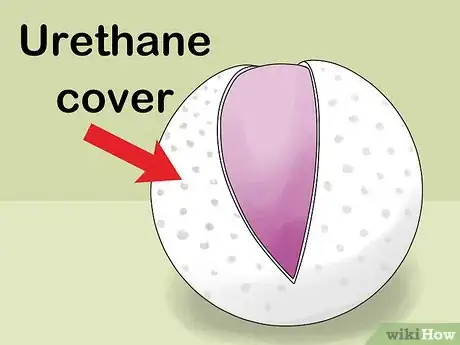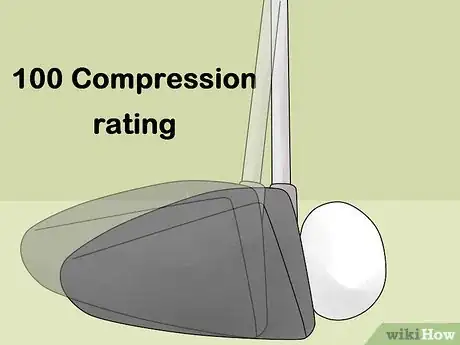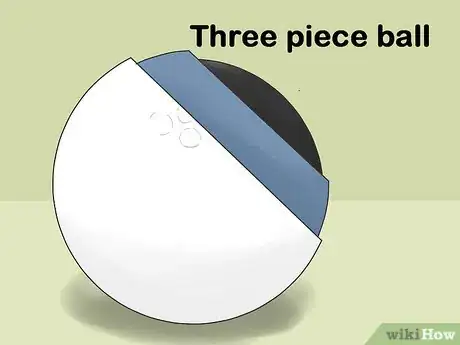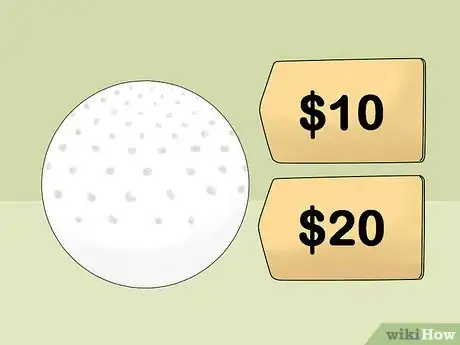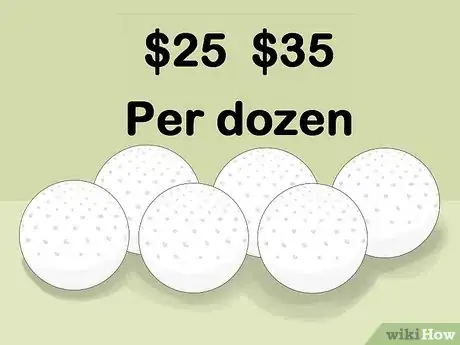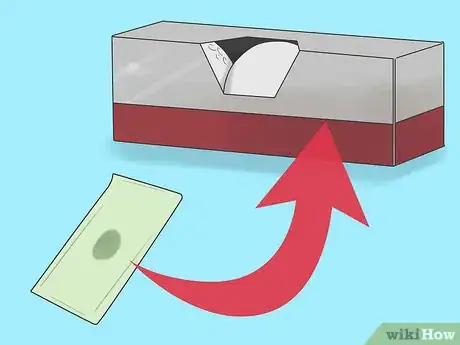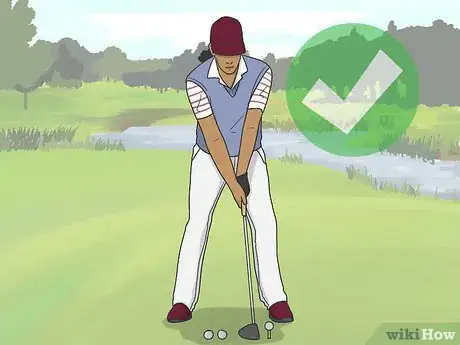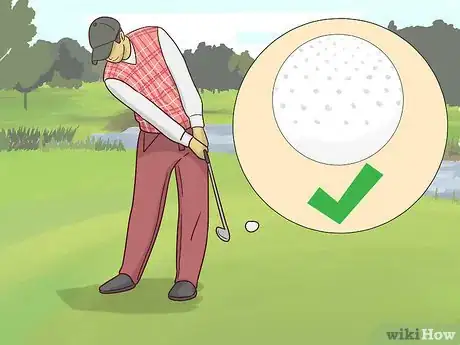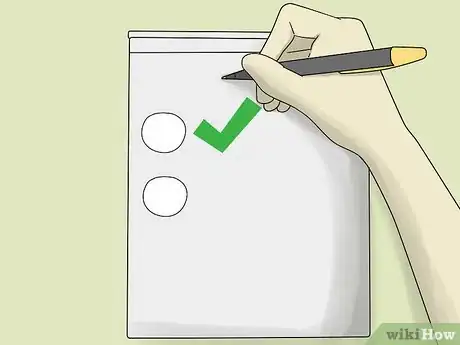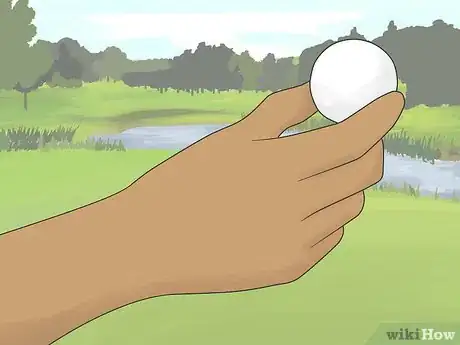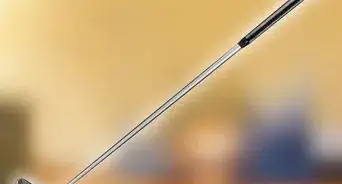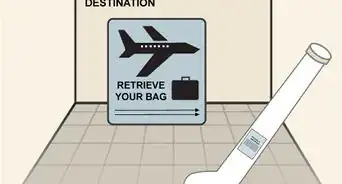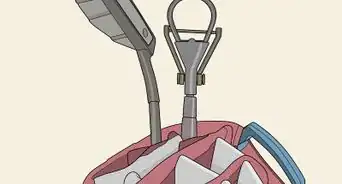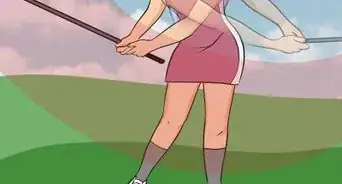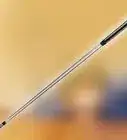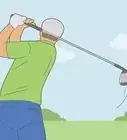X
This article was co-authored by wikiHow Staff. Our trained team of editors and researchers validate articles for accuracy and comprehensiveness. wikiHow's Content Management Team carefully monitors the work from our editorial staff to ensure that each article is backed by trusted research and meets our high quality standards.
This article has been viewed 19,814 times.
Learn more...
Selecting the right kind of golf ball can do a lot to improve your golf game. You can choose golf balls based on what you need to improve – like control or distance – or based on price. You should practice with a few types of new balls to see which ones feel best to you before you buy a large pack.
Steps
Method 1
Method 1 of 4:
Choosing Golf Balls for Control
-
1Look for balls with ionomer covers. Ionomer covers are plastic covers. When you hit them with a golf club, they tend to absorb the energy from the golf club and not spin. This can prevent your ball from spinning and thus gives it more control through the air.[1]
-
2Select balls with an 80 compression rating. You want your golf balls to have more spin when you’re near greens. Spin on a ball is great for controlling short golf shots, and can often lead the ball to stick to the green instead of rolling away.
- These are also best for golfers who often drive their ball less than 240 yards.
Advertisement -
3Choose a multilayer ball. A multilayer ball also restricts the spin of the ball. These are best for drives that need to go exactly in the direction you want.[2]
Advertisement
Method 2
Method 2 of 4:
Choosing Golf Balls for Distance
-
1Choose golf balls with a urethane cover. Urethane covers have quite a bit of rubber in them. Using a golf ball with a urethane cover allows it to bounce harder off of the golf club, giving it more distance. However, these types of balls are also harder to control, so they are generally better for more advanced golfers.
-
2Use balls with a 100 compression rating. The center of this ball is harder. Again, they’ll go further but are harder to control. These are best for golfers who regularly drive further than 240 yards (220 m).[3]
-
3Choose a three-piece ball. The layers of the ball allow for a particular transference of energy that makes the ball go further. They also tend to roll longer, so you’ll get distance over the ground, rather than just in the air.[4]
Advertisement
Method 3
Method 3 of 4:
Choosing Golf Balls by Price
-
1Choose cheap balls if you’re new. If you’re new to the game of golf, you’ll likely be losing a lot of them. Buying expensive or even mid-range balls that you might lose is a good way to waste your money. Instead, look for balls that are around $10 to $20 per dozen.
- Try to avoid purchasing recycled balls, which usually come from driving ranges. They’re cheap, but they’re usually of poor quality and they can actually impede your game.
-
2Pick mid-range priced balls if you’re an average golfer. These golf balls are usually $25 to $35 per dozen. They generally give you a good mix of control and distance, which is great if you’re an average golfer.
-
3Select expensive balls if you’re a regular player. If you’re a regular player – you play a few times a week – look for more expensive balls. These are usually over $35 per dozen, but can help you make the small tweaks that take your game to the next level. These types of balls tend to be very specific in what they do, so know which elements of your game you want to improve before you buy this type.
Advertisement
Method 4
Method 4 of 4:
Practicing with Multiple Types
-
1Buy a single sleeve of each kind. If there are a few types of balls that you’re interested in, but you’re not sure which will be best, just get one sleeve (three balls) of each kind. That way you have enough to practice with but you don’t end up with a bunch of balls you won’t use.
-
2Take them to the range or putting green. Once you’ve purchased the balls you think might work, head to the driving range or putting green to practice. This gives you a chance to feel them out before you play an actual game.
- Keep in mind that if you take your new balls to a driving range, you won’t get them back.
-
3Focus on one type at a time. For example, only hit the ones you’re interested in for control first, and then move to those you got for distance. You don’t want to confuse the different types and then end up buying the wrong kind!
-
4Take notes. It’s going to be hard to keep track of the things you like or don’t like about each kind of ball. Take a small notepad with you so you can note the differences between the types. This will act as a great reference when you’re ready to buy a larger amount.
-
5Keep an assortment on hand while you golf. The clubs you're using and the conditions on the course will affect the type of ball you should use. Having an assortment of golf balls with you, that address different areas of concern, can help you have a great game no matter what.
Advertisement
Warnings
- Choosing the wrong ball could possibly affect your game so be careful in your decision.⧼thumbs_response⧽
- If you come across a brand you've never heard of do some research first.⧼thumbs_response⧽
Advertisement
References
About This Article
Advertisement
